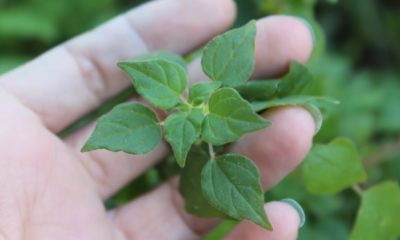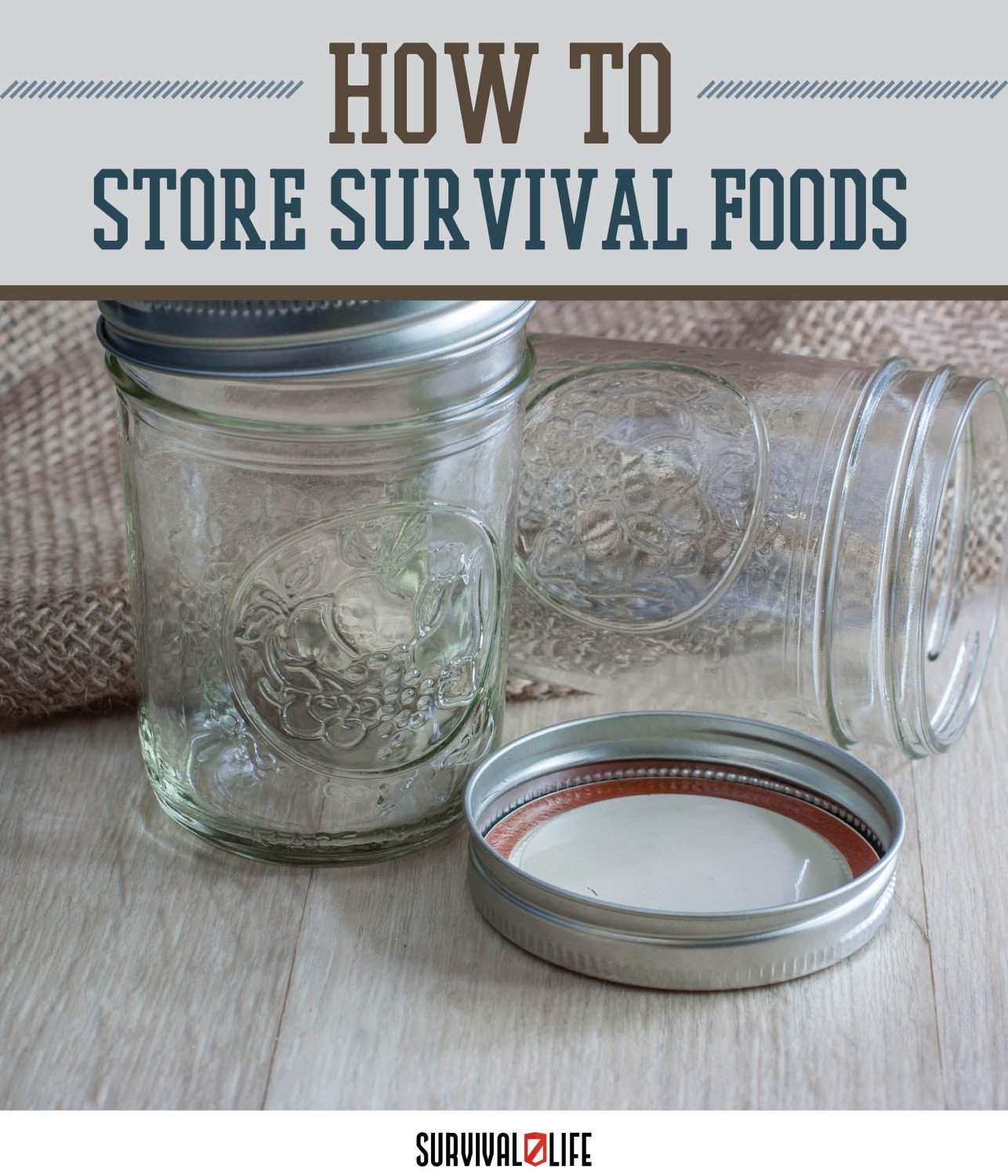Self Sufficiency
4 Basic Wild Survival Foods

In my last survival article, I discussed the Sacred Order; shelter, water, fire, food. When you have your shelter, water source, and fire you will begin to think about eating. In this article, I will discuss 4 basic wild survival foods that can be easily found almost everywhere.
RELATED: How to Repackage Survival Foods
First, I would like to touch upon an important spiritual aspect of gathering from Earth Mother. It is important to remember to ask permission to take from Earth Mother and then give thanks, express gratitude. Give something back. A tobacco offering is appropriate if you have it. Collect what you need with a “caretaker” attitude, which means gather in a way that will leave the area healthier and better able to grow and replenish. Ponder the effect your taking will have on the next 7 generations, remember, we did not inherit the land from our forefathers, we are borrowing it from our children and grandchildren. Leave plenty for them!
4 Basic Wild Survival Foods
Correct identification of plants is of extreme importance! Your life may depend on it! Be certain of the identification of plants before eating as some plants are poisonous. I suggest you obtain a field guide and start learning to identify edible plants in your area as well as poisonous plants to stay away from.
Pine: Pinaceae Family, Pinus Genus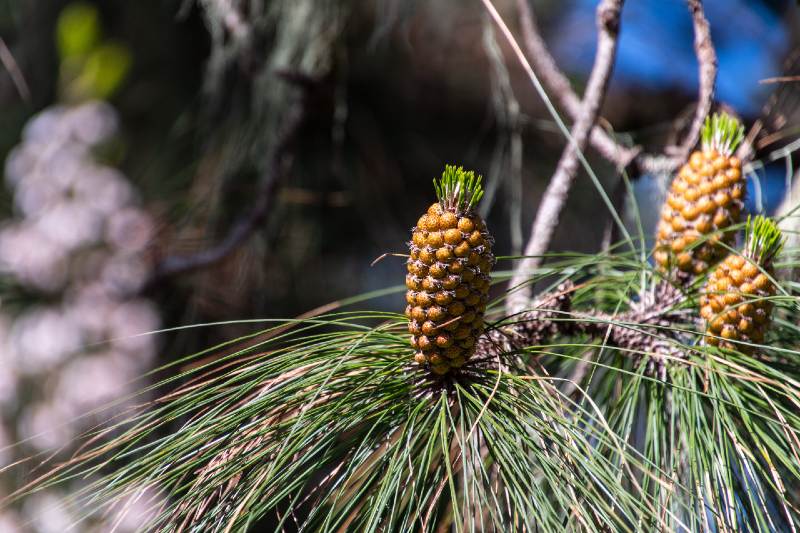
Pines are evergreens with needles that grow in clusters of 2-5.
Pine is edible year-round, however, you must eat from a living tree or a very freshly downed tree.
- Parts to eat: needles, inner bark, buds, young green cones, pollen, nuts.
- Needles: Pull bundle cap off, chop needles and make tea. Steep in hot water until needles sink to the bottom.
- Inner Bark: This is the cambium layer. It is white in color and is edible year-round. The inner bark is high in nutrients, vitamin C, and sugar. You can eat the inner bark raw, boil it like noodles or dry it and pound it into flour.
- Pine Buds: Eat the bright green new ones in the spring. You can eat raw or boil them and sweeten them with honey or sugar.
- Pollen: Gather by shaking into a bag. Eat raw, in a stew, or mix with your pine bark flour. The pollen is very high in protein.
- Young Green Cones: In summer you can gather the newly forming cones and boil for a few minutes and eat.
- Pine Nuts: In autumn gather the nuts from pine cones and eat raw or grind into pine nut butter.
- Oak: Quercus genus.
- Part eaten: Acorns
Oak is very high in tannic acid so more preparation is needed before eating.
After gathering your acorns you will want to dry them for several weeks for storage. If you are going to use them right away you don’t have to dry them.
First, you will shell them. Then winnow them using a shallow bowl or basket, toss-up and down to remove the husks.
You must leech acorns before using them! To leech chop them into quarters and put them into already boiling water for 5 minutes. Pour the water off and repeat this process 5-6 times. This process removes the tannic acid and makes the acorns edible.
Eat acorns or pound into flour. Acorn flour can be used just like regular flour. The flour loses about half its nutrients in 2-3 days so don’t pound into the flour until you are ready to use it. Store your acorns in a cool, dry, dark place, keeps them for several months.
Acorns are high in protein and fat.
Grass: Graminaceae (14,000 species)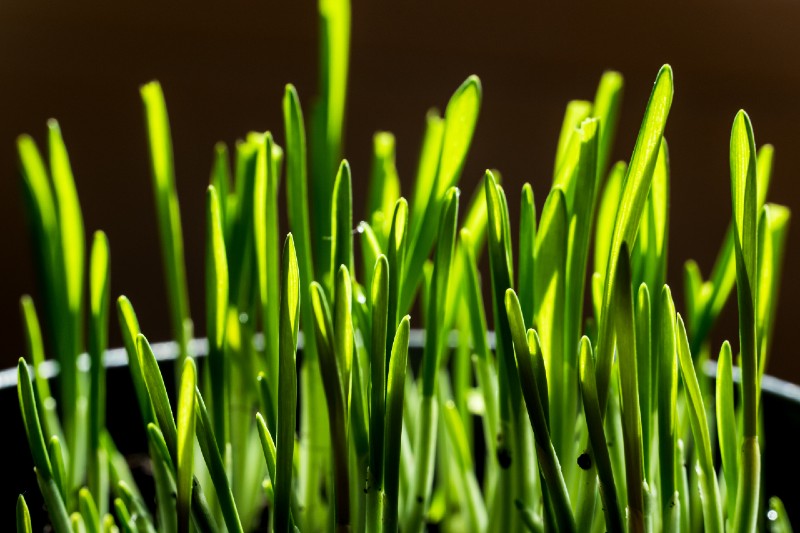
- Parts eaten: roots, leaves, seeds.
You can eat the roots of grasses year-round either raw or cooked. Eat the leaves raw or dry and pound (grind) to add to other flour. Don’t grind until you are ready to use it.
Seeds are ready when they turn are brownish in color and fall off into your hand. You can boil and eat like hot cereal or pound them into flour. The flour makes yummy bread and cakes. High in vitamins.
Caution! Be aware of Ergot Fungus! Ergot fungus grows in the place of seed, it is enlarged, purple, or black in color. Is most common in domestic rye, but can be found in grasses. Ergot Fungus prefers moist areas. Do your research and make sure you can identify Ergot Fungus!
Cattail: Typha genus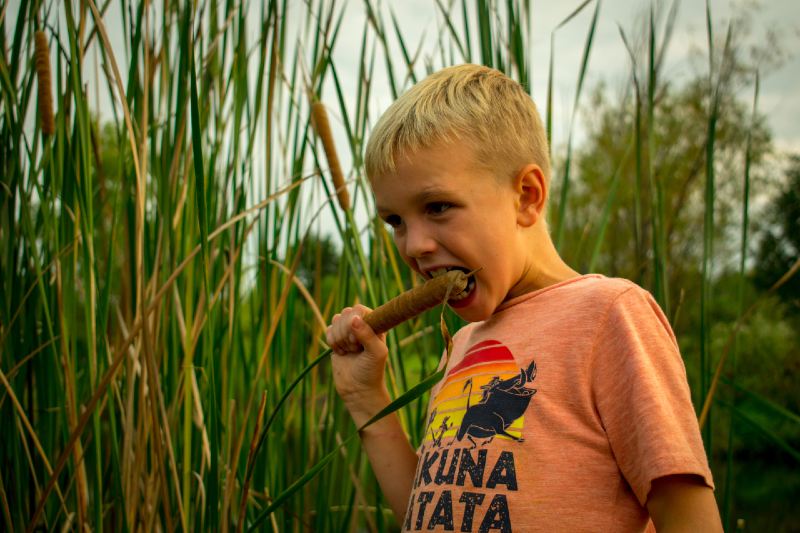
- Parts eaten: new shoots in spring, flower head, leaves, pollen, rhizome (root), corms.
- Shoots: Gather in spring or early summer. Always cook the shoots (bake, boil) and eat the core.
- Flower head: Steam or boil and eat like corn on the cob.
- Pollen: Eat raw or use flour.
- Leaves: Eat the leaves the same as grasses.
- Rhizome (root): Make flour with the roots. Wash the root, split it in half, dig out the white part into a container of water. Let it settle, then pour off the water. The flour will be in the bottom. You can dry the flour for later use or use it right away to make cakes, bread, etc. Nutrients: starch and protein.
- Corms: Corms are found along with the roots. Feel for a hard knot and collect the hard knot. Prepare and eat like a potato. High in vitamins and other nutrients.
These are the basic wild edible foods that can keep you alive and healthy for a long period of time in a survival situation. Having a spiritual connection with our Earth Mother is the most important skill of all. Learn her voice and how to communicate with her and instead of surviving, you will flourish.
Shelley Lincoln (Mountain Water Woman) invites you to visit my website for more articles on various spiritual topics or to email questions and comments. Also offered is a large selection of home altar supplies, ritual supplies, and mystical gifts. Stop in today and see what we offer. [http://www.crystalcandle-shop.com]
Article Source: https://EzineArticles.com/expert/Shelley_Lincoln/664729
You Might Also Like:
- How to Grow Your Own Food
- 23 Best Survival Knife Brands You Can Trust
- How To Make A Remote Control Gun
Calling all preppers, craftsmen, bushmasters, outdoorsmen, and all-around skilled people, Survival Life needs YOU! Click here if you want to write for us.
Don’t forget to stay connected with us on Facebook, Twitter, Pinterest, and Instagram!
Article Source: http://EzineArticles.com/
-

 Do It Yourself7 months ago
Do It Yourself7 months agoParacord Projects | 36 Cool Paracord Ideas For Your Paracord Survival Projects
-

 Do It Yourself9 months ago
Do It Yourself9 months agoHow To Make Paracord Survival Bracelets | DIY Survival Prepping
-

 Do It Yourself9 months ago
Do It Yourself9 months ago21 Home Remedies For Toothache Pain Relief
-

 Do It Yourself9 months ago
Do It Yourself9 months agoSurvival DIY: How To Melt Aluminum Cans For Casting
-

 Exports8 months ago
Exports8 months agoAre Switchblades Legal? Knife Laws By State


